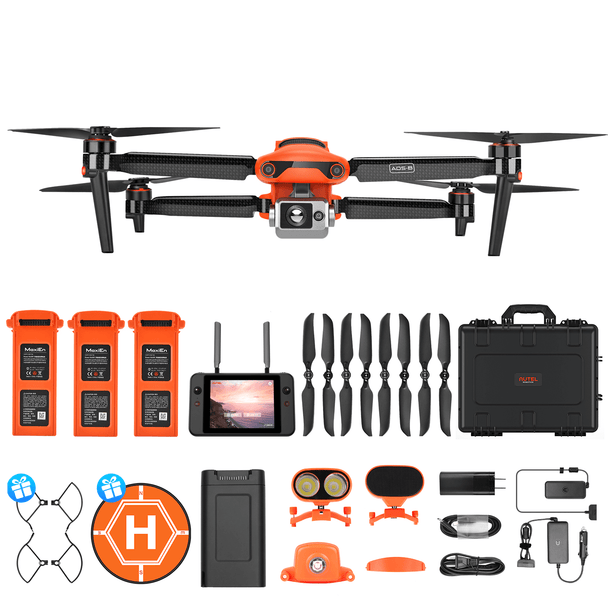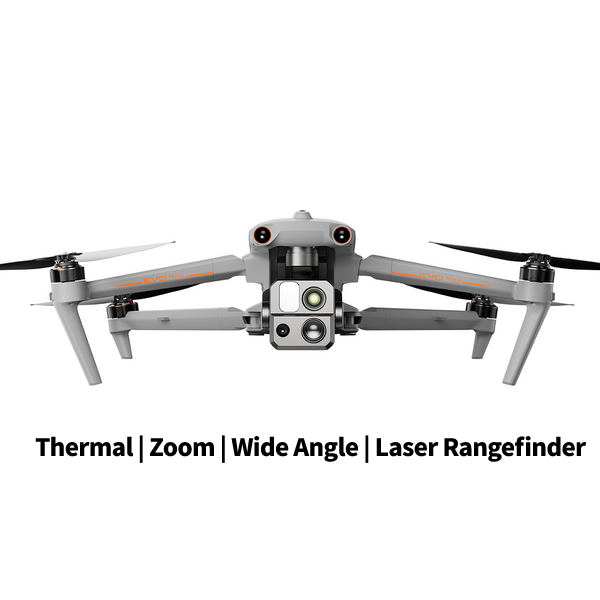In the ever-evolving field of drone technology, drone search and rescue has become a major new use. Search and rescue drones can provide emergency responders with a fusion of thermal imaging and high-resolution photography, optimizing the effectiveness of drones in critical life-saving scenarios.
Race against time for drone search and rescue operations
Time is of the essence in search and rescue missions. The first few hours are often referred to as the "golden hour," the period when the chance of a successful rescue is highest. In common search and rescue scenarios, avalanches, earthquakes, and loss of personnel all have the most critical rescue time. Drones shorten the time for further discovery and action, reducing time delays.

Rescue operation data accuracy
Precision is critical for search and rescue operations. The information used by search and rescue teams must be accurate. Drones observe from above and have keen environmental awareness. They provide accurate coordinate information to save time for the rescue team, reduce the area of the search area, update in real time, and convey reliable information as quickly as possible.
Maximizing resource utilization during search and rescue operations
Rescue missions are often carried out with limited resources. These constraints may be in terms of personnel, equipment, or even time. What makes search and rescue drones a key asset in these operations is that they are fast, affordable and easy to deploy. Compared with the cost and value of a search and rescue drone, it is simply a piece of cake.

Search and rescue drones reduce the burden on search and rescue personnel
Manual searches over a large area are laborious and tiring, and search and rescue personnel face tremendous pressure as they work tirelessly around the clock, and they also need rest. Search and rescue drones bring humanized solutions, optimize staffing, and improve the team’s decision-making and overall efficiency.
Technical limitations of search and rescue drones
While drone technology has advanced by leaps and bounds, it is not without its limitations. But failures can also occur under harsh environmental conditions, and sometimes their ability to operate is limited under certain conditions. For example, many drones, as advanced as they are, can struggle or even fail to work in heavy rain or fog – which is why organizations need to be keen on the capabilities of the search and rescue drones they choose to purchase, taking into account imagery etc. All factors include payload stability even at night, structural sturdiness, performance in windy conditions and water resistance.

Choose a search and rescue drone among Autel Drones
Search and rescue drones require long battery life, thermal imaging capability coverage, good image performance, stable image transmission capabilities, and wind and rain resistance. Among Autel drones, we recommend the Autel EVO II Enterprise V3 and EVO MAX 4T drones.
Autel EVO II Dual 640T V3 Enterprise Bundle
- Remote ID Updated
- Free Landing Pad and a pair of propeller guards
- 7.9" Smart Controller V3
- 15KM Image Transmission
- SkyLink 2.0
- 50MP Picture/0.8" CMOS Sensor
- 640*512 Thermal Imaging Resolution
- 10 Thermal Color Palettes
- 360° Obstacle Avoidance
- Dynamic Track 2.1
- 38 Mins Flight Time
Autel Robotics EVO Max 4T
- 8K 10x Optical Zoom
- Thermal Camera:640x512 | 16x Digital Zoom
- Wide Camera: 50MP | 1/1.28" CMOS
- Zoom Camera: 48MP | 8K 10x Optical Zoom(160x Max)
- Laser Rangefinder
- Autel SkyLink 3.0 | 12.4 miles Transmission Range
- 720° Obstacle Avoidance
- 42 mins Max Flight Time
- A-Mesh 1.0 | Mesh Networking Technology
- 3D Map Planning | Multiple Mission Types | Data Security
- Multi-channel Projection Screen*
- Autel SDK










